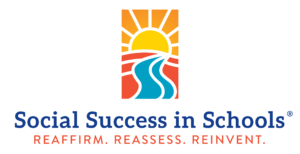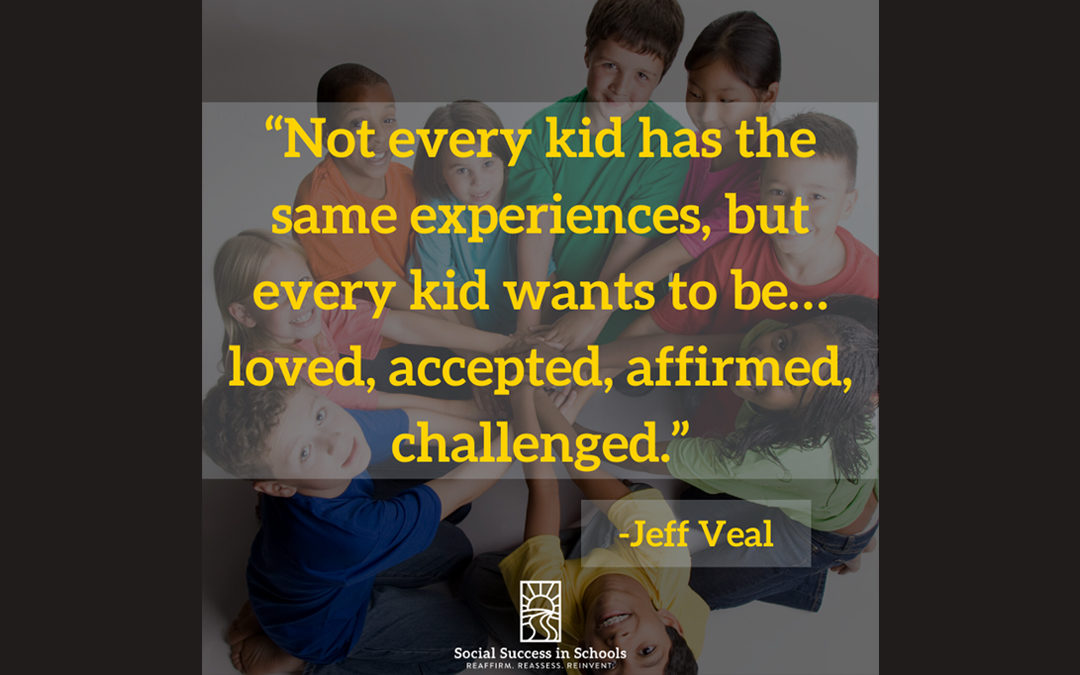
Let’s Make Social-Emotional Learning a Top Priority During
School Closures
The new normal COVID-19 demands are anything but normal. Certainty has shifted to uncertainty, and for educators, school closures have completely rewritten their job descriptions along with their daily schedules. Let’s Make Social-Emotional Learning a Top Priority During School Closures.
Moving curriculum into the virtual realm has educators at every level reevaluating their priorities. Educating children has never been solely about academic content, as evidenced by that empty space they feel as they try to connect with students from behind their computer screens.
It’s never been more obvious that educators are not content-delivery robots. They coach students in choices, behavior, and interactions. They lead by example. They help their students become better versions of themselves and achieve academic success in the process.
This missing part of their online curriculum is social-emotional learning (SEL). Its loss leaves many educators discouraged and frustrated. But it’s not just them; it’s their students, too. Never before have they come to school solely to absorb academic content. Now more than ever, both students and educators are needing SEL to be built into this new normal.
To help make SEL a priority during school closures, Social Success in Schools® is here to build your awareness and offer ideas. We want you doing what you do best: educating the whole child.
Social-Emotional Learning a Top Priority | Make Time to Be Social
Our first priority is to show our students we love and accept them, even as they face challenges in their current learning environment. We do that by providing regular opportunities for purely social interaction.
During a typical school day, we consistently engage socially with our students, and these interactions fuel their learning. When we say hello as they enter the classroom, allow the class clown exactly 5.2 seconds of attention, or look at a phone picture of a student’s new puppy, they feel seen and cared about. They know they’re more than just a grade. They feel safe.
So, while it may feel counterintuitive to invite students to engage in a hang-out session, it’s truly one of the most important things we can do for them. Once they know we’re still on their team, they’ll more likely be willing to complete and upload that assignment, or email when they need help.
Consider these ideas:
• Host a social video chat weekly with students. Name the meeting something fun to ensure students you don’t expect
academic conversation. You can set a topic such as movies or games, but the goal is to let students interact with each other and you, in
a purely social manner.
• Engage students socially on your digital learning platform. Set up discussions just for fun. If appropriate for the grade level and allowed
by your school’s policies, you might also engage students through social media. Set up an Instagram account specifically for
professional interaction with students to maintain boundaries and avoid using your personal account.
• Watch for opportunities to engage students in specific SEL discussions. Allow students to share their fears and frustrations and know
that they’re not alone in those feelings.
Social-Emotional Learning a Top Priority | Lead by Example
As educators, we naturally lead in SEL by example. Students watch us as we interact with them and their peers. How do we recreate and automatic interaction as a deliberate online experience?
• Let students know what challenges you face in this remote learning transition. Share ways you’re working on overcoming them and
your successes and failures along the way. Maybe you felt nervous about hosting Zoom meetings, but you did some research and tried
it anyway. Maybe you messed up and embarrassed yourself, but now you know how Zoom works.
• Take the risks you ask your students to take. If you want them to make a video of themselves, then you should post videos of yourself,
too. If you present a challenge, such as reading every day, then you do it, too, and report on your progress. Sharing experiences shows
your support and empathy.
Social-Emotional Learning a Top Priority | Provide Explicit SEL Instruction
Once you’ve provided social interaction and found ways to lead by example, it’s time to incorporate specific SEL instruction into your online activities. Rather than adding to your students’ to-do lists, prioritize your planned activities and replace the lowest-priority items with SEL instruction. You may find ways to connect one of these projects to your academic content, but don’t worry if you can’t. SEL instruction is valuable on its own.
Consider these assignments for students:
• Be a helper. (Targets the SEL skills of; responsible decision-making, social awareness, and relationship-building) Provide a list of
suggested activities, such as reading to a sibling, helping make a meal, paying a compliment to someone in their home, or reaching out
to a friend or family member they haven’t spoken to in a week or more. Ask them to document how it affected their relationship with
the person they helped and how it made them feel.
• Get moving. (Targets the SEL skills of; self-awareness and self-management) Provide a short list of activities to choose from and do
once or twice a day. Ask them to document how it affected their mood and ability to focus.
• Quiet your mind. (Targets the SEL skills of; self-awareness and self-management) Encourage students to color a picture, look out the
window and notice the smallest thing they can see, listen to a song by focusing on a single instrument, or watch a cloud for 60 seconds
and pay attention to how it changes. Ask them to document how they felt before and after the activity.
• You’re the expert. (Targets the SEL skills of; self-awareness and social awareness) Ask students to demonstrate something they’re
good at or enjoy doing. Encourage students to compliment one another’s skills and talents. This serves as a confidence booster and
fuels social interaction as students learn more about each other.
Social-Emotional Learning a Top Priority | Involve Parents
Finally, reach out to parents. Let parents know that your biggest priority is their child’s emotional well-being and offer them some suggestions for how you can work as a team.
Consider these suggestions:
• Assure parents that their relationship with their child is ultimately the most important thing to focus on right now. They’ve been
tasked with classroom management, which is far more about relationship building than micro-managing tasks. Encourage parents to be
open to anything as they search for that balance, whether it’s in their comfort zone or not- (i.e. playing a game, helping with a video for
social media, talking about sports, etc).
• Encourage parents to include their children when performing acts of kindness. Consider allowing students to substitute a small
assignment each week with an act of kindness. These need not cost money or take much time. Acts of service and kind words can go a
long way.
• Challenge parents to coach their children daily on managing their emotions. Suggest using the “cheers and fears” structure each
evening. This involves identifying the most gratifying part of your day and the most challenging part. This activity makes gratitude a
habit and builds trust as parents help their children navigate challenges.
Educators, better days will come, but for now, intentionally incorporating SEL into your virtual classrooms will help your students feel connected and loved. It will start to patch that part of your heart that’s broken. While school closures have impacted communities differently, your relationships with your students and protecting their (and your own) emotional well-being remain your most precious responsibilities.
This is what it really means to be an educator, and together, we’ll succeed.

